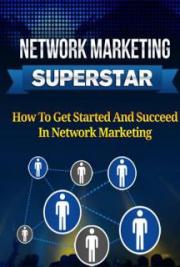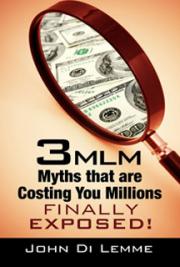Instant Info Riches

“Little-Known Ways To Get Rich From Information Products!”
Did You Know You Can Get Hundreds Of Products With Resale Rights Inside Our Reprint Rights Marketing Members Area?
Just go here for a sneak preview
NOTICE: You now have master rights to this product
© Copyright 2005 Reprint Rights Marketing
ALL RIGHTS RESERVED.
No part of this report may be reproduced or transmitted in any form whatsoever, electronic, or mechanical, including photocopying, recording, or by any informational storage or retrieval system without express written, dated and signed permission from the author.
DISCLAIMER AND/OR LEGAL NOTICES:
The information presented herein represents the view of the author as of the date of publication. Because of the rate with which conditions change, the author reserves the right to alter and update his opinion based on the new conditions. The report is for informational purposes only.
While every attempt has been made to verify the information provided in this report, neither the author nor his affiliates/partners assume any responsibility for errors, inaccuracies or omissions. Any slights of people or organizations are unintentional. If advice concerning legal or related matters is needed, the services of a fully qualified professional should be sought.
This report is not intended for use as a source of legal or accounting advice. You should be aware of any laws which govern business transactions or other business practices in your country and state. Any reference to any person or business whether living or dead is purely coincidental.
Before We Begin:
Purpose And Benefit Of This Course
Dear Friend,
Congratulations and thank you for your investment in “Instant Info Riches”!
This is a step-by-step action course designed to provide you with a simplified approach to producing, packaging and promoting your own information products. You can really get rich from information products if you diligently apply the strategies revealed in this course.
There are no fluff or fillers here and each strategy is given to you in a straight-forward manner. Short and sweet it’ll be, I won’t want to bore you with useless chatter too.
Information product marketing is not a complicated process, this course is kept 3
rd grade simple to show you just how easy it is.
It’s divided into 3 main sections covering the processes of producing, packaging and promoting your product, with additional sections containing more powerful tactics for your use.
You will also be happy to know that the knowledge you discover here can be applied to any market and niche. ..
This is because proven information marketing principles stay the same no matter where you bring it to. And as long as there is a hungry market for information, what you learn here will work.
Once you possess this knowledge, you can literally produce unlimited information products and promote them for instant results. With that, let us start this incredible journey…
Introduction:
The Bare Essentials
There are a couple of things that must be mentioned before you begin to create your information product.
You still need to have your own web hosting and domain name that will allow you to host a 'mini site’ to showcase and deliver your information product for download.
Now in my opinion, one of the BEST registrars to get your domain name at for a reasonable price is NameCheap. While not exactly the cheapest, they make up for it with their reliabilty, commitment to customer service and exclusive benefits for customers.
Go to:
http://www.namecheap.com

The regular price for a standard .com domain name here is $8.88. There are other domains available such as .net, .org, .info, .us, .tv, .biz, .name etc. ranging from $2.88 for .info to $42.95 for a .tv. The most popular TLD you’d want to go for are .com, .net and .info.
Now let's talk about web space…
While it is possible to find free hosts that give you some quality features, they will more than likely put strict limitations on what you can do with your hosting space.
Plus you will have NO CONTROL over the banners that appear on your site either., and you wouldn’t want any banner on your sales page at all to avoid looking unprofessional and distracting to the sales process.
Free hosting is definitely out if you’re looking at building a serious long-term business and establishing customer trust.
So if you don't already have a web host, then you’d need to get one obviously.
Make Sure You Have A Business Friendly Webhost –
This Host Has Been Around For Years And Perfect For Your Resale Rights Business…
Ultimately the total cost of getting your own domain name and web hosting space will be peanuts considering the riches you’ll be getting out of it with information marketing.
Section I: Producing Your Product
What Can Your Information Product Be About?
This section is a little more lengthy because for most, this could be the hardest step in the entire information marketing process.
The reason for this is because when you begin anything for the first time it always seems that much more difficult due to it being the very first time.
For some people, writing is an almost impossible task. Let me tell you though that writing an article, special report, or a 340 page ebook isn't any different than learning to roller blade.
However once you get the ‘hang’ of it, it becomes child’s play.
The best advice for this is to write about WHAT YOU KNOW. That makes everything so much easier. And don't think you don't know anything, because everyone knows something that will be of value to someone else.
(Note: You can create anything you want and you’d still be able to get people to purchase them simply by offering your customers a way to make money with your product. This can be resale rights, private label rights, an affiliate program etc. Simply by inserting a ‘moneymaking’ element into your product will get you more sales compared to the other way round.)
Nothing is ever written in stone when it comes to the internet.
A quick example is how many older books on marketing and selfimprovement have been storming onto the scene with the trend of Public Domain products.
So if you think that your subject won't have any audience, you couldn't be more wrong.
Chances are good that someone will want to read what you have written even if they may have never heard of you. It doesn’t matter. What does matter is that everyone has a unique way of looking at and solving certain problems. No two people see things the same. Even if there are hundreds of ebooks, special reports, or articles on the same topic that you’re writing on, it won't be filled with the exact same information. That’s why you see literally thousands of ebooks covering the same subject matter with the author's own unique spin on it.
Lets get back to selecting a topic…
No matter which route you take, you should check if there’s a market for it first. You can do this by typing in your subject matter keyword here:
http://inventory.overture.com/d/searchinventory/suggestion/
You can also do a quick search on a new keyword tool called ‘The Dowser’
available free here:
http://www.keywordempire.com/keywordempire.exe.
Simply type in the your keywords to see the number of people who are interested in learning more about your subject. It will also give you good information on the ratio of current websites on your subject compared to the number of searches for it.
This is not the only way to perform testing on your subject matter of course.
Forums are a fantastic way to ask some questions about your subject and get real answers from real people. It's also a wonderful way to find out how much interest there is from others about your topic.
To go one step further, you could ask specific questions and incorporate those into your ebook chapters based on the responses you get.
You can similarly visit the major search engines and check the supply and competitors. If there’re too many competitors in your subject topic with a low demand, you may want to rethink your topic.
Now before you begin writing, make sure you have the proper tool to begin with.
You can start out with the simple Notepad or WordPad tool that came with your computer. However, to cut through some additional formatting steps, i.e. - copying and pasting, etc., it's easier to use a tool with a more functions like Microsoft Word or the better, and FREE alternative, Open Office.
You can download a copy of Open Office at
http://www.openoffice.org.
You may also want to pick up the Open Office Suite. This is helpful to you if you don't have the more expensive Microsoft Office or PDF Maker programs.
Well now that you have just the right writing tool, let's start writing your first information product.
Make a list of the things that you do or like to do. Whether it's your job, a hobby you enjoy, or caring for children or pets. Remember that things which we often take for granted or overlook because we do them on a constant basis may be something the market wants to know. Once again do your due research for demand and supply as mentioned above.
Look over the list you just created and choose a subject from it.
Here are a few example topics that might give you some starting ideas:
** Effective Marketing For Small Businesses ** Organic Gardening
** Japanese Bonsai Tree Growing and Care ** Low-Fat Dessert Recipes
** Delicious Italian Recipes
** Working with Leather
** Buying a Car with No Credit or Bad Credit ** Fly Fishing for Beginners
** Pit Bulls as Pets: A Positive Experience ** Choosing A Name For Your Dog
** Home-Made Cat Treat Recipes
** Having an Iguana as a Family Pet ** Being a Better Parent
** Making the Most Out Of Every Day ** Hot Air Ballooning
** Bird Watching For the Family
** Model Airplane Construction
** Coin and Currency Collecting
** Knitting, Crocheting, Sewing
** How to Play Football
** Learning to Play Tennis like A Pro
** Proper Car Tune Up Instructions
** Easy SAT Study Guide For College Students
** Carpet Laying For Dummies
** How to Build Your Own Tranquil Outdoor Garden Sanctuary
The more you narrow down your topic, the more specific the niche category will be and the less competition you'll have.
Pretty much any topic or subject can be turned into a profitable information product if you put the effort into it.
You don't have to have any knowledge about one particular subject, as you could always do research on the topic and create the product as you go along (more on this later).
Once you have your choice topic selected, it's time to begin really writing it up.
Now don't be afraid. This is easier than you might think. The way to write an information product is to write it as if you are explaining the subject to someone who has no previous knowledge of it or has never heard of what you are talking about.
Go from beginning to end. Leave out nothing, no matter how small the detail. Remember, most of the people that purchase your information product will be new to the whole process of your subject matter.
You would want to create an 'outline' for your product. I’ll show you how in the following pages.
Don’t be worried about the length of your product. There are more important things to be concerned with than something as trivial as length. Believe me, there are marketers out there selling 5-15 page reports like hotcakes.
This is because they have something unique to share. They also focus on the way in which they provide the information to their customers, making sure it’s good useful information. People pay for useful information not the length of the product.
Always remember to be as original as you can be. A good way to do that is to write like you speak. Doing so will also make the task of writing a LOT easier for you.
Nothing is perfect. Get your product out there even if there are a couple of typos or a point you forgot to cover. It doesn't matter. What matters most is that you start and finish it.
“You don’t have to get it perfect; you just have to get it going!” Now let us move up the pace a little, it’s time to go short and sweet…
Can you imagine having your own products, which you can sell on autopilot 24 hours a day, 365 days a year?
I've just uncovered a rare opportunity to grab Private Label Resell Rights to a huge package of Niche products and thought you may be interested.
Okay - So what are Private Label Resell Rights?
To sum it up YOU get the source files of these books. You have complete control over the product. You give them your own title, you can add more information to them, you can add links to affiliate programs, you can put your contact details inside and YOU are the author of the product.
It becomes totally your product with no copyright or credit given to any one else!
The books are delivered to you in word format ready for you to edit and compile into your own ebooks.
You get 8 packages of products instantly which you can sell immediately. You will also get the sales pages, customizable graphics, an autoresponder series and traffic magnet articles, everything you need to make an income on autopilot.
***THIS IS HOW I WILL BE USING THESE PRODUCTS***
As well as selling them as ebooks you are allowed to create content rich websites from the content. This is a great way to earn income from Google Adsense.
The possibilities really are endless with content for blogs, autoresponders, special reports and more...
Plus you get two new products every month!
If you have been looking for your own products then here's your chance.
Subject Areas That Will Always Produce Info Riches
How does your business serve others? How do you (or your product/service) contribute to the improvement of lives?
You have to look past the obvious.
For example, cosmetic companies don’t sell lipstick; they sell romance (and sex). They know women want to love and be loved. Lipstick is a device to attain it.
Historically (and most likely forever) people want:
• Security
• Sex
• Power
• Immortality
• Wealth
• Happiness
• Safety
• Health
• Recognition
• Love
How do you or your product/service deliver any of those essential needs?
As you begin to brainstorm ideas for your product, keep these customer desires in mind.
How To Brainstorm And Narrow Down Your Information Product Ideas To Find The “Quickest To Market” Concept
Below is an example of the brainstorming spreadsheet you’ll find on the following pages.
STEP 1: Brainstorm as many ideas as possible.
Write down EVERYTHING that comes to mind. There are no bad ideas at this point. Just do a complete brain dump onto the spreadsheet in the “Idea” column.
You should get at least 20 – 50 ideas during this process. If you get stuck, go back and look through the list of customer desires to get some ideas.
Once you have 20 – 50 ideas (or you feel like you’re finished – if you can come up with 100 ideas go for it!), then move on to step 2.
# Idea
4 small business productivity software
3 college prep SAT study guide
2 dog name book
1 Italian recipe cookbook
How difficult? Who will do it? Level of knowledge? H O N M O L M M L E M E
STEP 2: How Difficult?
In the “How difficult?” column place an H, M or E in the column for each idea. This indicates how difficult it would be – based on your experience and skills – to turn this idea into a product.
NOTE: DO NOT ask anyone else to answer this for you – especially by making a post in a marketing forum. Only YOU can answer these questions.
H = Hard, M = Medium, E = Easy
Once you’ve placed an H, M or E next to each idea… move onto Step 3.
STEP 3: Who Will Do It?
Next to each idea place an O or M in the “Who will do it?” column. This will reference who would be responsible to actually do the work for this idea.
If you have the skills to do the work (and want to do the work) then put an “M” for ME.
If you don’t have the skills or would prefer to pay someone to do the work then put an “O” for OTHERS.
Once you’ve finished this for every idea on your list, move on to the next step.
STEP 4: Level Of Knowledge?
In this step, place an E, L or N next to each idea based on your personal level of knowledge about the subject of the idea.
If your idea is in an area that you are an expert… place an E.
If your idea is in an area where you have some knowledge but you’re not an expert… place an L.
If you think the idea is a money-maker but you have no personal knowledge of the subject… place an N.
After completing that for each idea, let’s move on to the final step.
STEP 5: Prioritize
Ok, now let’s prioritize your ideas.
Don’t get worried… this is going to be SO easy. You see, most fail at this point because they try to prioritize their ideas based on their own personal “feelings”. Essentially, they pick the ideas they like or want to do.
Our process is going to make this SO simple for you.
#1 Priorites would be: E (Easy), M (Me), E (Expert)
Why? Because this means it’s an Easy idea, you’ll be doing the work so it’s under your control and you’re an expert in the subject. It can’t get any better than that.
The Last Priority would be: H (Hard), O (Others), N (No Knowledge)
Why? Because the idea is Hard to create, Others would have to be involved (which would mean extra money, additional time and limited control) and you have No knowledge of the subject matter.
The rest of the categories would be ranked somewhere in the middle.
You can even give a Number to each letter so the calculation of your priorities would be simple math.
Easy = 1, Medium = 2, Hard = 3
Me = 1, Others = 2
Expert = 1, Limited = 2, None = 3
Place those numbers next to each letter in the appropriate columns and then just add up the totals.
Your totals would rank everywhere from 3 (lowest) to 8 (highest).
You’re going to take the top 10 ideas and move on to the next section. Depending on how many ideas you have rank as a 3, 4, etc. you may have all 3’s moving on or 3’s and some 4’s, etc.
If you have more than 1 idea in the 6 category moving on to the next section then you may want to consider brainstorming some additional ideas.
# Idea How difficult? Who will do it? Level of knowledge?
Difficult: Easy, Medium or Hard
Who: Me or Others (example: Freelancers) Knowledge: Expert, Limited, None
A Proven ‘Info Riches 10-step Formula’ To Quickly Evaluate Your TOP Product Ideas
Now for an ESSENTIAL part of the evaluation process that is almost always overlooked.
Once you have your top 10 ideas identified (from the previous section), you can use the matrix on the following pages to evaluate each of the ideas to determine the one(s) with the greatest opportunity for success.
Idea 1 Idea 2 Idea 3 Idea 4 Idea 5 Idea 6 Idea 7 Idea 8 Idea 9 Idea 10 Passionate 1 1 1
Have Money 11
Spend Money 11
Repeat Buyers 11
Insatiable 1 1
Addicts 11
Reachable 1 1 1 1
Already Interested 1 1 1
Already Motivated 1 1
Already Predisposed To Buy 11
TOTAL 3 10 1 10
The example, above, shows how I would have scored the 4 ideas shown in the previous section. Review the last section to see which idea was #1 - #4. Now compare them with the evaluation matrix above.
You’ll see that I’ve identified “Small Business Productivity Software” and “Dog Name Book” as perfect 10’s.
Now, based on the previous section ranking the Dog Name Book as Medium, Me and Limited versus Small Business Productivity Software being ranking as Hard, Others and None.
I’d chose to move forward with the Dog Name Book. Use the blank 10-step matrix on the follow page to rank your top 10 ideas and then move on to the next section.
Idea 1 Idea 2 Idea 3 Idea 4 Idea 5 Idea 6 Idea 7 Idea 8 Idea 9 Idea 10 Passionate
Have Money
Spend Money
Repeat Buyers
Insatiable
Addicts
Reachable
Already Interested
Already Motivated
Already Predisposed To Buy
TOTAL
How To Effectively Create A ‘Profitable Product Outline’
Here’s what I mentioned about in the beginning, having an ‘outline’ for your product. This will guide and accelerate your product creation process faster than you thought possible.
Now before you get scared by the thought of creating an outline… it’s not as hard as you think. Don’t let thoughts of your high school or college English class give you cold feet.
Below is an example of what an outline might look like for the Dog Name Book.
IDEA: Dog Name Book
Item Front Cover
Legal/Copyright
Dedication
Table Of Contents Preface
Introduction/Overview Section 1
Section 2
Section 3
Section 4
Section 5
Section 6
Section 7
Section 8
Section 9
Section 10
Section 11
Section 12
Section 13
Section 14
Section 15
Section 16
Section 17
Section 18
Section 19
Section 20
Summary/Conclusion Credits
Resources
Back Cover
Your Title
Front Cover
Legal/Copyright
Dedication
Table Of Contents
Preface: Value of a Dog's Name
Introduction to Dog Naming
History of Dog Names
Dog Names by Breed
Dog Names by Male/Female
Dog Names by Country
Most Popular Dog Names
28 Tips for Picking the Best Name for Your Dog
Conclusion
Credits
Dog Resources Back Cover
Ok, you’re probably asking, “Why do I have to create an outline?”
Let’s get down to simple basics.
Forget about “products”. Forget about books, audios, videos, software, etc.
What makes the product creation process SO extremely simple is that at the core of each product is… Content.
Content. Plain, simple, no frills content.
It doesn’t matter if you’re sourcing the content by writing it, using ghostwriters, articles, interviews, private label products, public domain materials, etc. you’ll still benefit from having an outline.
I’d personally recommend writing your own content as it’s unique and YOU.
How do we organize content into a meaningful flow? You got it – by creating an Outline.
And from that content outline you can create ANY type of product you wish. It all starts from a meaningful outline.
Use the blank outline above to develop a meaningful outline for the product idea you’ve chosen as your #1 idea.
After you’ve done that – we’ll talk about how and where to find the content for your outline.
How To Use Google To Find And Create Content For Your Product Outline
Most people know about Google.com as the largest search engine in the world… however, few realize how po









